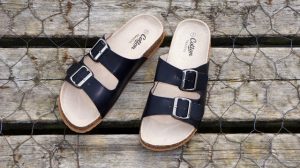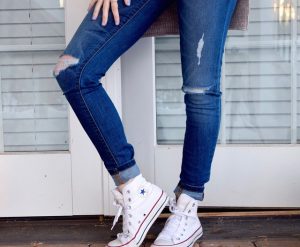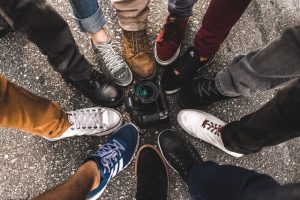Quality merchandise photography may go a long way towards developing a more positive online shopping experience. How you style your product, the background and lighting on your studio, your camera settings, the angles you take from, and your post-production processing will affect if your product images convert online traffic into customers.
Footwear photography, particularly, comes with its own unique set of dos and don’ts.
Don’ts
Don’t use harsh lighting
Lighting is just one of, if not the most, critical parts of shoe photography. You must  have appropriate lighting or your product will not look appealing to your customers. The wrong type of lighting can emphasize imperfections and warp colors. Harsh, direct lighting that casts deep shadows is the worst type of lighting for shoe photography.
have appropriate lighting or your product will not look appealing to your customers. The wrong type of lighting can emphasize imperfections and warp colors. Harsh, direct lighting that casts deep shadows is the worst type of lighting for shoe photography.
Don’t use blurry or soft focus
Soft focus could be artistic in many photography genres, however, in shoe photography, customers regard soft focus as a nuisance because it prevents them from seeing exactly what they will be purchasing. The more the picture is out of focus, the less the customer will see the product in its entirety.
Don’t crop inconsistently
Images on your website are side by side, and inconsistencies draw attention to the eye. Your customers will see if a number of your footwear images are more zoomed in than others, and they will notice if shoes exactly the same distance away from the camera are higher or lower than each other. They will notice differences in light, differences in attention, and so on. All such inconsistencies divert focus from the product itself.
Don’t display too few angles
One of the largest mistakes in shoe photography is showing very few angles of the product on the listing. Clients want to see each side and face of the shoe as they decide whether or not to purchase it.
Do’s
Do use softer lighting
Exploit soft, natural lighting. Take your photographs inside along a large window with natural light flowing in or alternatively rent a studio softbox installation if you’d like to go down the artificial lighting route. If you must take photos outdoors, locate a thickly-shaded area to find the most even light. However, do not take photos at midday.
Do use higher aperture
Using an aperture of f/11 on your DSLR camera, for example, will promote every aspect of your shoe into focus. Also, make sure to use a tripod as this will reduce camera shake and give your images maximum crispness.
Do create a cropping template
 Develop a shooting and cropping template which keeps to strict guidelines and retains your images making them consistent from frame to frame. Abiding by a template will speed your shooting and post production workflow enhancing the professional appearance of your site by providing you with a constant portfolio of product pictures that all appear to belong together. Many online channels need certain web criteria for cropping and sizing, so observe image guidelines and incorporate them into your template to make your shoes look their very best.
Develop a shooting and cropping template which keeps to strict guidelines and retains your images making them consistent from frame to frame. Abiding by a template will speed your shooting and post production workflow enhancing the professional appearance of your site by providing you with a constant portfolio of product pictures that all appear to belong together. Many online channels need certain web criteria for cropping and sizing, so observe image guidelines and incorporate them into your template to make your shoes look their very best.
Do provide a number of different angles
Customers love to examine shoes from all angles. Photograph the side view, the view from the back, the top view, the view of the shoe turned slightly to the left, and all versions of these suggestions. Some other suggestions include:
- At least one angled shot of the entire pair of shoes
- Two straight-on side shots: left and right
- Two angled side shots: left and right
- A shot of the front part of the shoe
- A shot of the back of the shoe
- A shot of the top view of the shoe
- A “detail” shot up close to depict texture, material, etc.
Once the shooting is complete the final step is editing to ensure consistency  across all images. Editing is just as important as the shot itself. This process gives you the chance to tidy up and enhance your photos. The shoes need to appear clean. Spend time cleaning up dust particles, editing out glue, or anything that is not supposed to be there. Even if you made a small mistake when shooting, the right software can help you end up with great results.
across all images. Editing is just as important as the shot itself. This process gives you the chance to tidy up and enhance your photos. The shoes need to appear clean. Spend time cleaning up dust particles, editing out glue, or anything that is not supposed to be there. Even if you made a small mistake when shooting, the right software can help you end up with great results.
When possible, it is suggested to shoot in RAW so you have the most options. RAW files have a much larger dynamic range within every photo, providing you with greater flexibility. If you don’t have access to Adobe Lightroom, there are free applications such as Irfanview or Picassa, which could also edit RAW photos. If you are not shooting in RAW but still need to clean up a few things, Adobe Photoshop is a robust tool although it does not come cheap. However, there are a number of free options out there to use. For example, Pixlr Editor is the nearest thing to Photoshop, and it is a free online application.



